Can Khaosan clean up its act?
The BMA promised to transform backpacker-Khaosan into a “family-friendly” destination by February this year. We went to see how they're getting on.
They say Khaosan Road is changing. Bye bye booze buckets, ramshackle guest houses and rave parties. Hello clean, level pavements, street food binges and cultural performances—all part of a B48 million plan spearheaded by the BMA to revamp the backpacker backwater into a “family-friendly” destination. We visited on Jan 6 to check out the overhauled walking street, hoping to see the promised revamp. Instead, none of that was happening.
Repaved footpaths and orderly food stalls. Khon masked dances, muay Thai performances and OTOP purchases. These were some of the things we expected to see when we got off the tuk tuk at Khaosan Road on a Monday evening in January. Instead, the “vibrant,” “fun” backpacker ghetto greeted us with an oddly quiet and sleepy mood, alongside the usual slew of pushcarts selling fruits, roti and generic clothing against the backdrop of dilapidated shophouses.
The revamp was supposed to have started last year in October and be completed by February 2020. We were disappointed and confused by the lack of progress, although not exactly surprised.
“The ‘walking streets’ with traditional performances have happened only twice since the launch,” says a waiter at Padthai@Khaosan Road restaurant. “It got canceled during the New Year’s [holiday], too. If the BMA wants it to happen, then they should make it happen. But in typical BMA style, the situation is unpredictable.”
A mango cart vendor we spoke to had the same thought. “They’ve canceled the walking street a few times now, without giving us [vendors] any notice. When it does happen, sometimes they won’t allow push carts inside Khaosan. It really affects my business.”
In mid-November 2019, the Bangkok Metropolitan Administration (BMA) announced it was planning to turn three of Bangkok’s major commercial areas—Silom, Yaowarat and Khaosan roads—into pedestrian-friendly zones in the hopes to boost tourist numbers, stimulate the economy and help low-income vendors earn extra money.
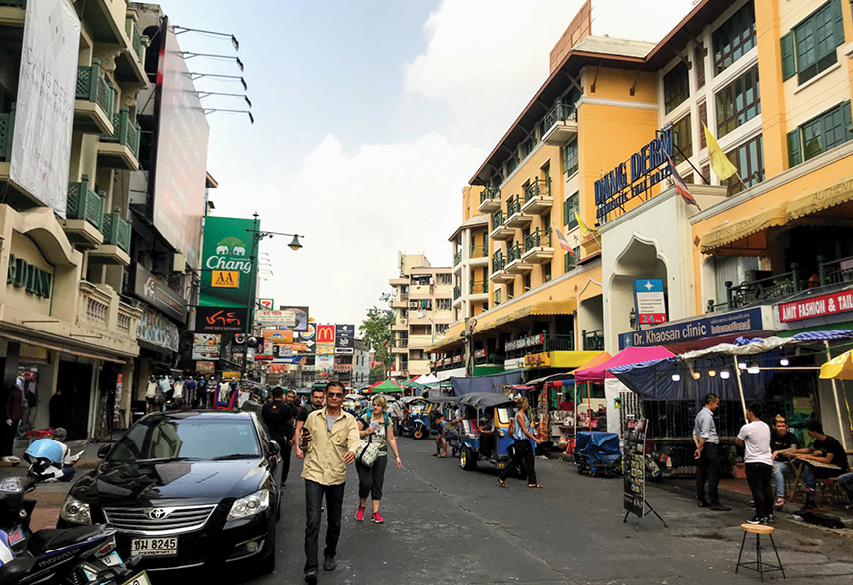
Deputy Governor Sakoltee Phattiyakul claimed that each area would have its own “theme”—Silom Road would be turned into a walking street on the third Sunday of each month, starting from Dec 15 and running until May 2020. Yaowarat Road would be partially closed to vehicles on Fridays and Saturdays, while as of Dec 13 the whole road would be fully closed on Sundays, when over 200 street food vendors would take over the streets. As for Khaosan, the road would be transformed into a pedestrian-only zone on Mondays starting from Dec 16.
The BMA promised to pump B48 million into this 400-meter stretch of real estate to turn it into a family-friendly, international-standard walking street—repaved level footpaths with flame-finished tiles, collapsible stainless steel railings to protect pedestrians from cars, dedicated spots for vendors spaced two meters apart from one another, with enough room that you can actually walk between them. But from what the eyeball test tells us, zero construction has happened so far. The BMA might not have spent even B48 of that money yet.
It turns out there’s a reason for the delay. “We [the Khao San Business Association] sent a letter to the BMA to delay the construction to sometime after Songkran, as many business operators view that time period to be the peak holiday season,” explains Sanga Ruangwattanakul, president of the Khao San Business Association and CEO of Buddy Group, one of the biggest hospitality businesses in the Khaosan area. “This year’s Chinese New Year is also happening in January and we think the construction work would affect tourists who want to celebrate Songkran at Khaosan.”
And what about the so-called “walking street” that’s supposed to take place every Monday? Sanga says it will probably happen again, but on a smaller scale. “The thing is, if the BMA wants to continue having the walking street, they should know that Mondays are not ideal as that’s the day when vendors can’t set up stalls on the footpath. That’s why the vibe here can get a bit lonely instead of being fun and vibrant,” Sanga noted.
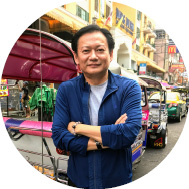
“As a business operator, I have so many ideas I wanted to do for Khaosan, but I can’t, because the land belongs to the BMA,”
Sanga Ruangwattanakul
Sanga says for Khaosan to be a proper walking street, the BMA needs to have enough budget for private sectors. “They say they want to have a walking street, but where’s the budget to set up the stage? Where’s the budget to hire the performers? The problem is the BMA is not business-minded, and so it can be difficult for them to see the big picture. That’s why a lot of times their plans may sound good in theory, but in reality they don’t add up.” And, Sanga adds, when they do survey the area, they get bogged down by disputes.
Over the past two years, Khaosan Road has been rife with conflict. In July 2018, Sakoltee said vendors would be relocated to a temporarily designated space nearby, complete with ambulance parking and security checkpoints, after a City Hall inspection found Khaosan overrun with food vendors. The move was part of the war against Bangkok’s street food that began in April 2017 with the clearance of vendors around the Thonglor area.
Bangkok authorities ordered all vendors to clear from the street on Khaosan by Aug 1, 2018, but were met with pockets of resistance. In the same month, BK reported that despite BMA officials patrolling the street, many of the vendors had simply moved into alleyways. The BMA, however, reiterated that the clearance had been successful and that vendors would be fined B2,000 if they remained on the footpath.
“I have to pay B10,000 per month to the shophouse next to me...to be in this tiny alley,” says one vendor who wished to remain anonymous. One stall owner in her 50s both agreed and disagreed with the clearance. “The unlicensed footpath bars started to get worse 10 years ago,” she says. “They would start off as a normal stall...then end up selling alcohol and operating as a bar. Doing this makes the area more organized, though some of their solutions are very unrealistic.”
In an effort to resolve ongoing disputes, Sakoltee said the makeover will be able to accommodate up to around 240 vendors, who must already be registered for a trading license. They will be allowed to sell from 9am-9pm and will be organized into zones, with a permit to do business on site for one or two years. After that, they will have to be selected by drawing lots.
As for vendors with pushcarts, Sakoltee stated that they will not be permitted in the area. According to MGR Online, the deputy governor claimed the majority of them are illegal immigrants. City officials also announced they would ensure that all items sold on Khaosan were not counterfeit or pirated goods, although the BMA hasn’t explained how it would make good on that promise.
“The new facelift should be a win-win for all sides. The vendors should be happy, because they’ll still be able to do business on Khaosan with much better structure and organization. Meanwhile, shopkeepers won’t have to worry about their storefronts being blocked,” he told MGR Online. “The BMA is also happy, because we’re getting a tourist attraction that is beautiful, clean and organized. Many people may think that water-logged, dirty old canvas sheets are part of Khaosan’s charm, but presenting an image like that is not really our answer.”
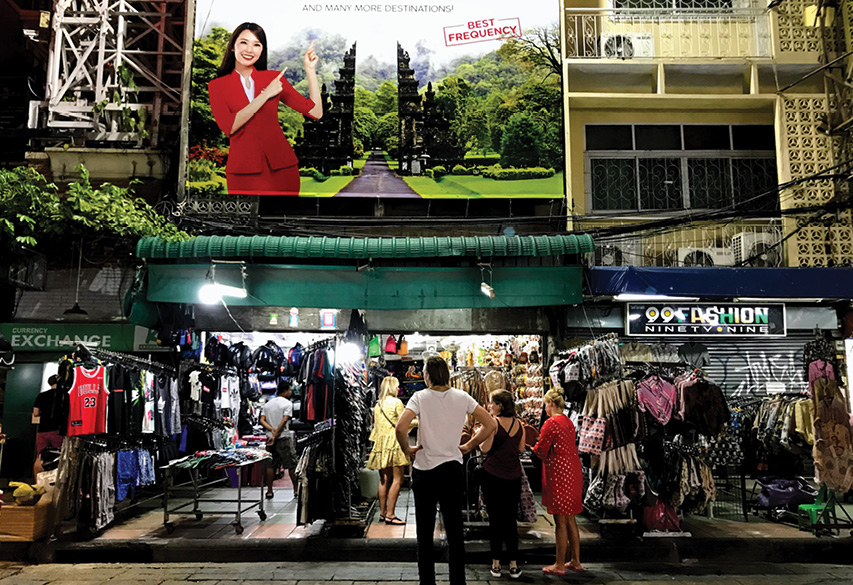
One clothes shop owner we spoke to, who has been doing business on Khaosan’s footpath for the past 15 years, says she is quite concerned about how much the new revamp will really benefit her business.
“I have to pay B10,000 a month to my landlord, as well as a yearly fee to law enforcement officers to be able to continue selling on this spot. But at the end of the day, it’s my landlord’s name that is registered with the authorities,” she says. “I want it to be my name on the trading license when the revamp is complete. I’ve already applied to be registered, but no officials have contacted me yet.”
While Sanga is generally rosy about Khaosan’s revamp, he believes there are still other factors the BMA needs to take into account besides vendors and shopkeepers. “Currently, there’s a bit of chaos when it comes to taxis parking to get passengers in front of hotels and hostels. Not to mention the number of catering trucks and vans coming in and out the road to deliver food at these places,” he says. “Perhaps there should be time slots for these drivers. The key is to make Khaosan Road more organized. Officials at Chana Songkhram Police Station and Phra Nakhon District, including the BMA and business operators, need to come together to have further discussions on how to achieve that.”
Sakoltee told the Bangkok Post in August that “the new Khaosan will not lose its old charm. The area will be cleaner, more beautiful and in line with the architecture and landscape of the area.” However, some still favor the freewheeling spirit of the old road over the gentrified revamp.
“Khaosan Road is a world-famous attraction that has developed its own unique characteristics over decades. Any place can become an upscale market, but only one place can be Khaosan Road. Why would anybody want to risk ruining it?” says a business operator, who asked not to be named.
Chris Thomson, a British expat who first visited Khaosan in 2010 and used to call the strip his “home,” has similar views. “There have been some classier bars and hotels appearing over the years, but I think the charm lies more in its low-budget lifestyle,” he says. “I think Khaosan became successful organically without government intervention. Part of the charm, and why it’s considered the backpacker hub of Southeast Asia, is its imperfections.”

"The new revamp from the bma needs to focus on creating physical unity in order to unify khaosan road."
Dr. Panit Pujinda
So what would make Khaosan Road a “real” walking street that’s both commercially viable for vendors and memorable for tourists? We asked associate professor Dr. Panit Pujinda, director of the Department of Urban and Regional Planning, Faculty of Architecture, Chulalongkorn University, for his opinion.
“From the past until now, a major problem with Khaosan is unregulated land use, meaning vendors from all over can set up stalls and sell anything they want based on what they think would attract more customers. This shatters any sense of unity in the district,” Panit explains. “The new revamp from the BMA needs to focus on creating physical unity.”
It’s still too early to say whether the revamp will be a success, but early returns aren’t promising. For now, the parties rage on, the red plastic buckets still brim with bad booze, and the disputes between stakeholders continue. Khaosan, it seems, is still Khaosan.

Happening on the third Sunday of each month
Time: noon-10pm
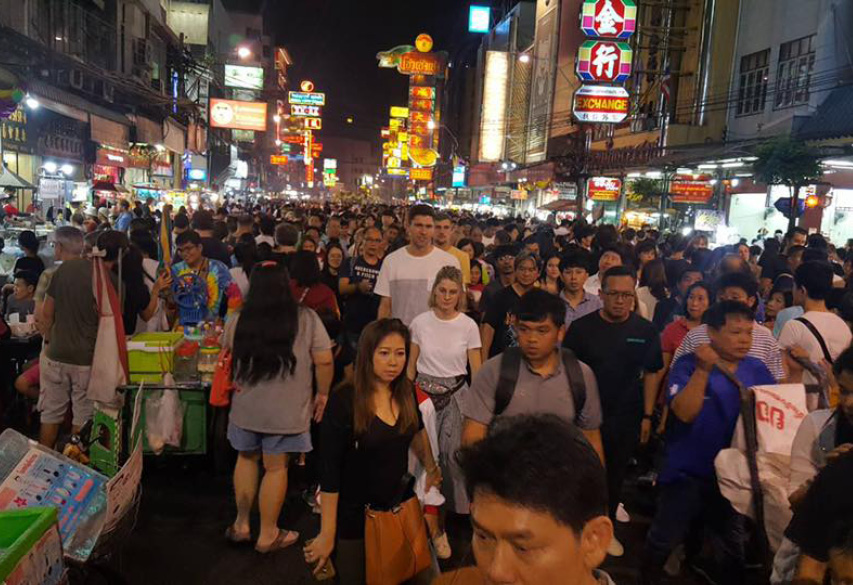
Happening every Fri-Sun
Time: 7pm-midnight
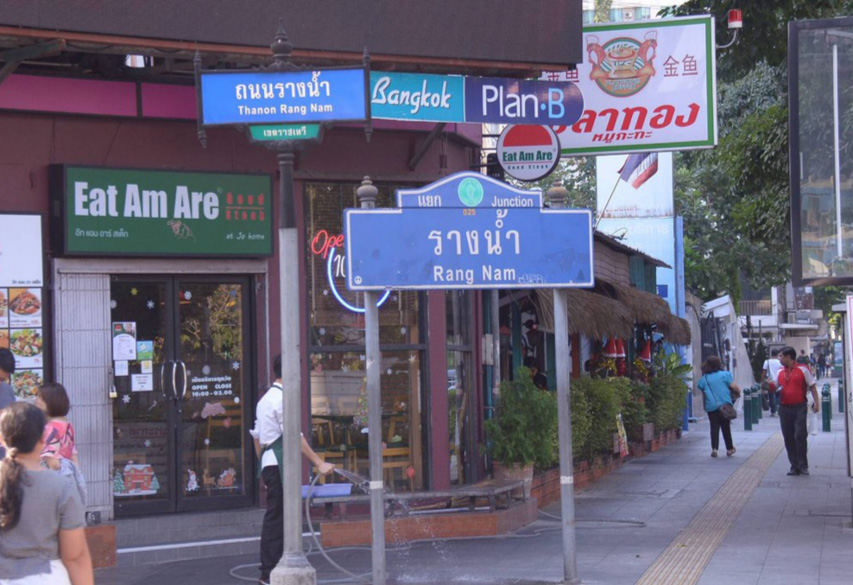
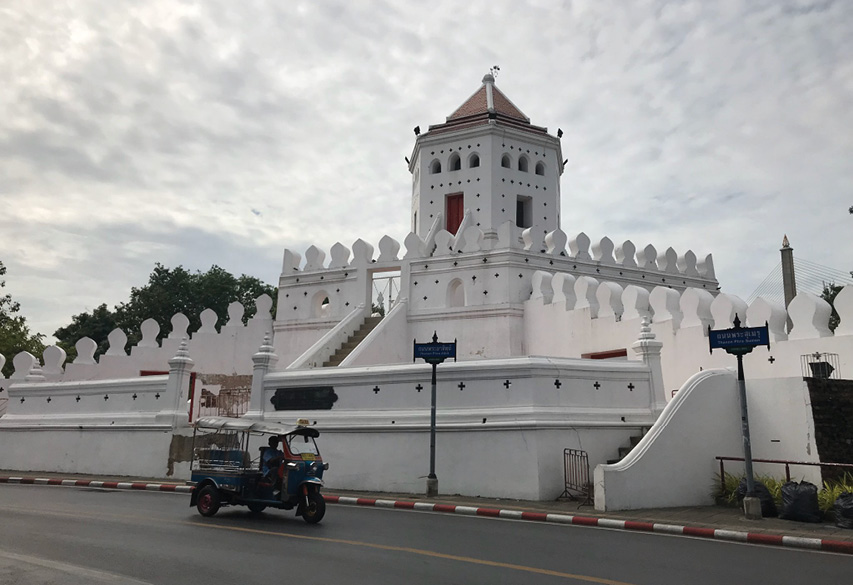
Date TBA
Advertisement